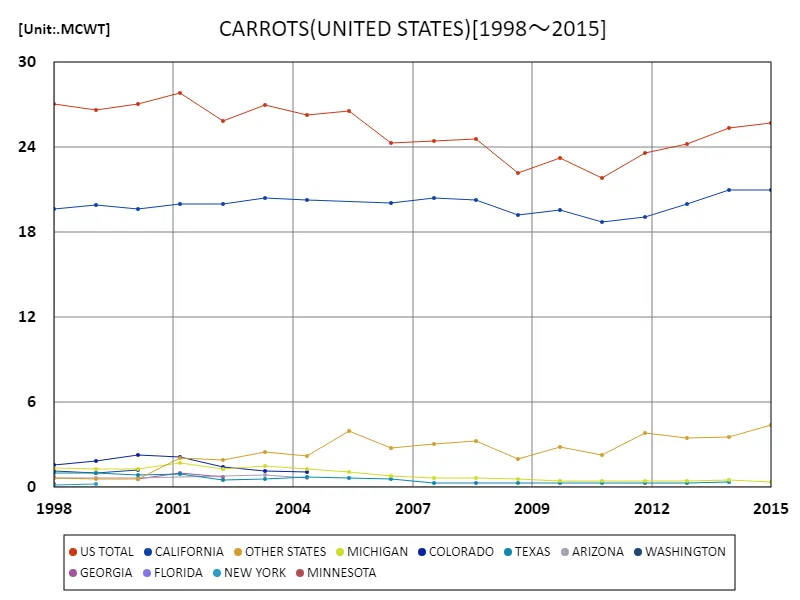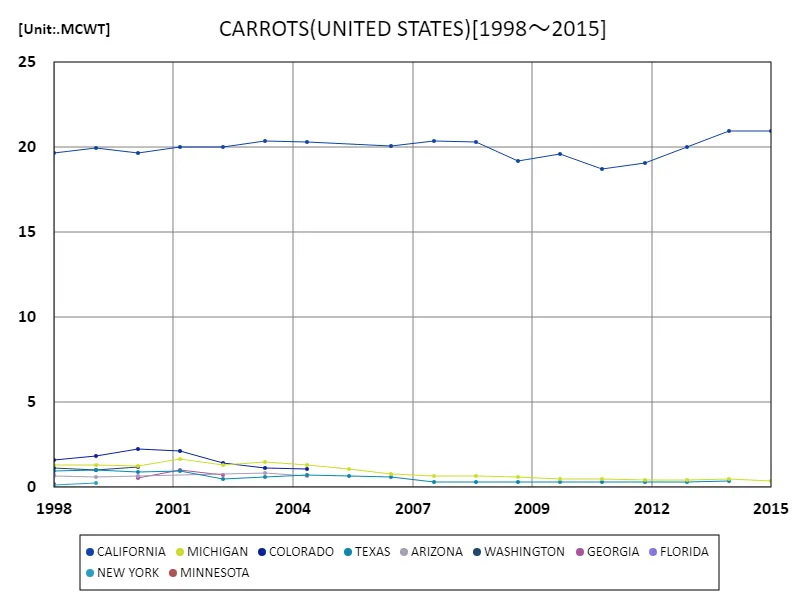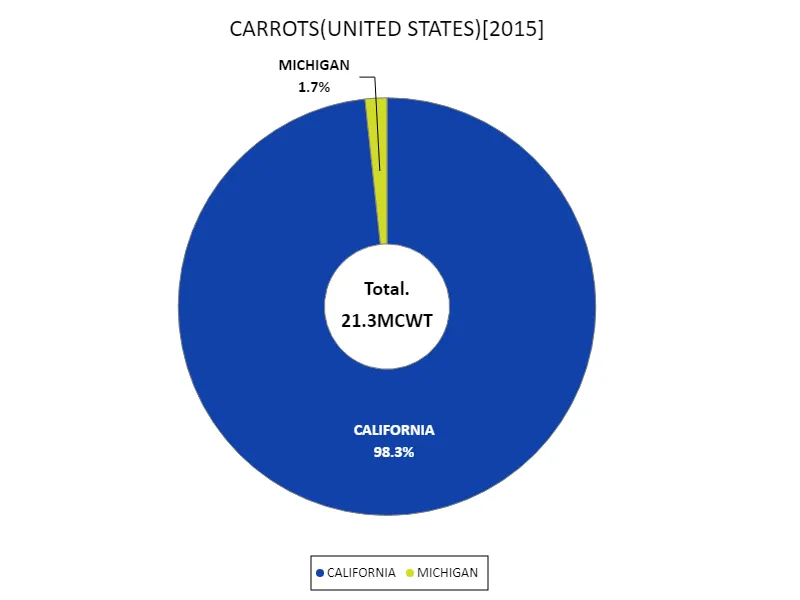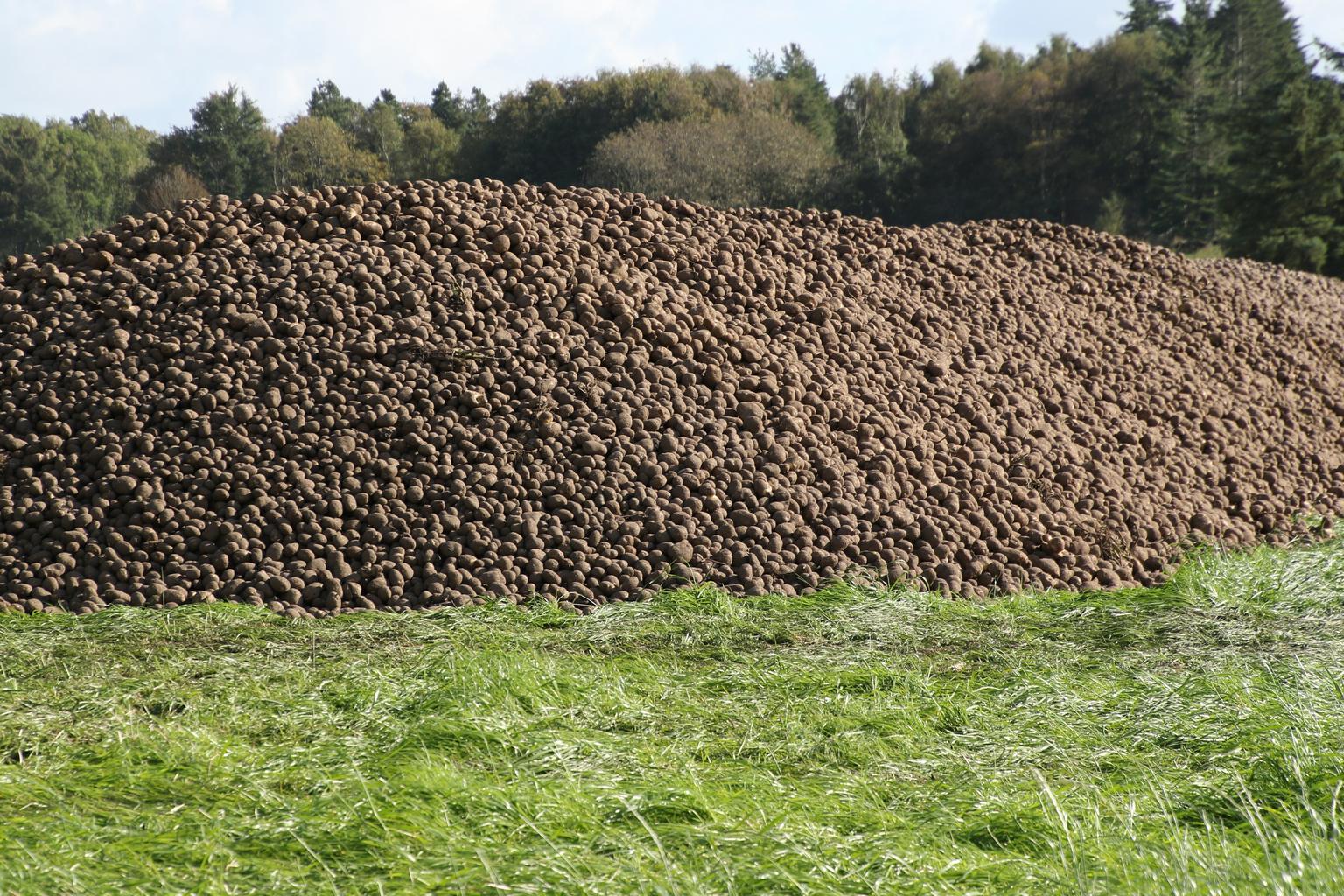Abstract
Annual U.S. potato production has remained stable for many years, reaching 441 million cwt in 2023, the latest figure. America’s climate conditions and advances in agricultural technology allow for the production of high quality potatoes. The main production areas are Idaho and Washington states, and these areas tend to have high production volumes due to suitable soil and climate. In addition, a wide variety of varieties are cultivated to meet demand, catering to a wide range of consumer and industrial uses. Technological innovation has made efficient cultivation possible and sustainable agricultural practices are being promoted. While increasing demand and adapting to climate change will remain challenges in the future, potato production in the United States is built on a stable foundation.
Potato production volume
Annual U.S. potato production has fluctuated over time. Looking at data from 1866 to 2023, the peak was recorded in 2000 at 514 million cwt, and has declined slightly since then. Compared to its peak, current production volume has fallen to 85.8% but still remains at a stable level. Possible factors behind the decline in production include greater efficiency due to advances in agricultural technology, changes in farmland, and fluctuations in climatic conditions. On the other hand, thanks to improved varieties and cultivation techniques, yields per unit area have increased, making production more efficient. Potatoes remain an important agricultural commodity in the United States, with steady consumer demand. In the future, there will be a need to stabilize and increase production volumes while promoting sustainable agriculture and responding to changes in market demand.


The maximum is 27.8MCWT[2001] of US TOTAL, and the current value is about 92.5%
Potato production (50 US states)
Idaho, the leading potato-producing state in the U.S., has seen its production fluctuate over time. Data from 1866 to 2023 shows that production peaked in 2000 at 152 million cwt and has declined slightly since then. Although current production has fallen to 93.2% of its peak, it still boasts the highest production in the United States. Idaho’s vast land area and particularly favorable climate conditions allow it to grow high-quality potatoes. In recent years, harvest yields have become more stable thanks to the introduction of sustainable agricultural practices and efficient cultivation techniques. In addition, a wide variety of varieties are cultivated to meet market demand and meet the requirements of consumers and the food industry. In the future, it will be necessary to maintain a sustainable production system and stabilize production volumes while taking into account the effects of climate change and the environment.


The maximum is the latest one, 21MCWT of CALIFORNIA
Potato production (latest year, 50 US states)
The annual production of potatoes in the United States is grown in a wide variety of regions, with Idaho emerging as a prominent producer. According to 2023 data, Idaho’s 142 million cwt was the largest overall, with an average of 33.7 million cwt, bringing the overall total to 438 million cwt. These figures highlight Idaho’s leadership role in potato production. Idaho’s fertile soil and favorable climate conditions allow it to grow large quantities of high-quality potatoes. Additionally, technological innovation and sustainable agricultural practices have made production more efficient. Meanwhile, other regions are producing to meet demand, and potato production across the U.S. remains stable. In order to meet the diverse needs of consumers and the food industry, efforts are being made to improve varieties and cultivation techniques. In the future, it will be necessary to promote sustainable agriculture while responding flexibly to climate change and market fluctuations.


The maximum is 21MCWT of CALIFORNIA, the average is 10.7MCWT, and the total is 21.3MCWT



Comments